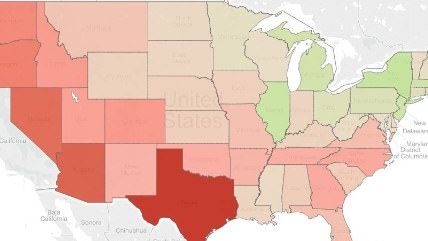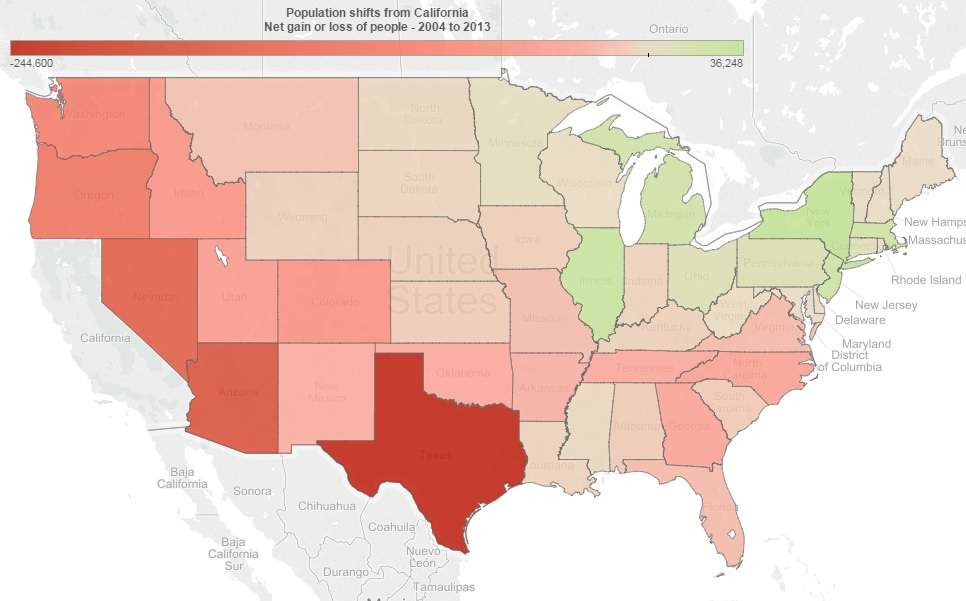Take a Look at Where Californians Are Fleeing To
Everything's bigger in Texas, including the number of Golden State residents who move there.


Between 2004 and 2013 California lost nearly 1 million in population from migration, according to new Internal Revenue Service tax return data analyzed by the Sacramento Bee.
The trend shows what has long been understood: the state's economic environment is sending residents fleeing to other states. The biggest beneficiary was Texas, gaining about 600,000 from California while losing about 350,000 to California. In fact, states in all regions of the country except for the northeast and Mid-Atlantic areas received more Californians than they've sent to the Golden State.
The income drain is estimated at $26 billion annually. The short Sacramento Bee piece notes that California's population is still actually growing from births and foreign migration. They're just not staying there.
And even as California loses population to other states, it is still managing to grow its tax revenue, something to keep in mind when anybody complains that the state needs to take even more money from people in order to solve its problems. But Californians aren't getting better government service for this money, thanks to the state's debts and pension crisis. All that extra money is going to pension obligations, which continue to grow as part of the budget. Noted by David Crane of Govern For California in a guest piece in a guest commentary for the Bay Area News Group newspapers:
To have any chance of moving ahead, those Californians require high quality education, reliable, safe and inexpensive public transportation, affordable and functional courts and colleges, a functional safety net, and a tax system that encourages employment and wage growth.
But those citizens and their hopes are the first casualties of a political system that cuts services and raises taxes, fees and fines to finance ever-greater retirement, health care and corrections costs. When that happens, they receive fewer and shoddier services despite higher tuition, taxes, fees and fines, utilize deteriorating infrastructure, and seek work and wages in a less robust employment environment.
To add insult to injury, last year the state shifted $170 billion of pension costs to the school districts. As California struggles against growing financial inequality caused in large part by educational inequality, what sense does it make to shift dollars from classrooms to pensions?
Tax increases don't solve the problem. In 2012 California voters passed a temporary tax increase known as Proposition 30 designed to generate an additional $50 billion in revenue over seven years. But as the math makes clear, all that revenue, and more, is being consumed by increases in retirement, health care and corrections spending.
Read more of his commentary here and check out the Sacramento Bee's interactive map here.


Show Comments (204)